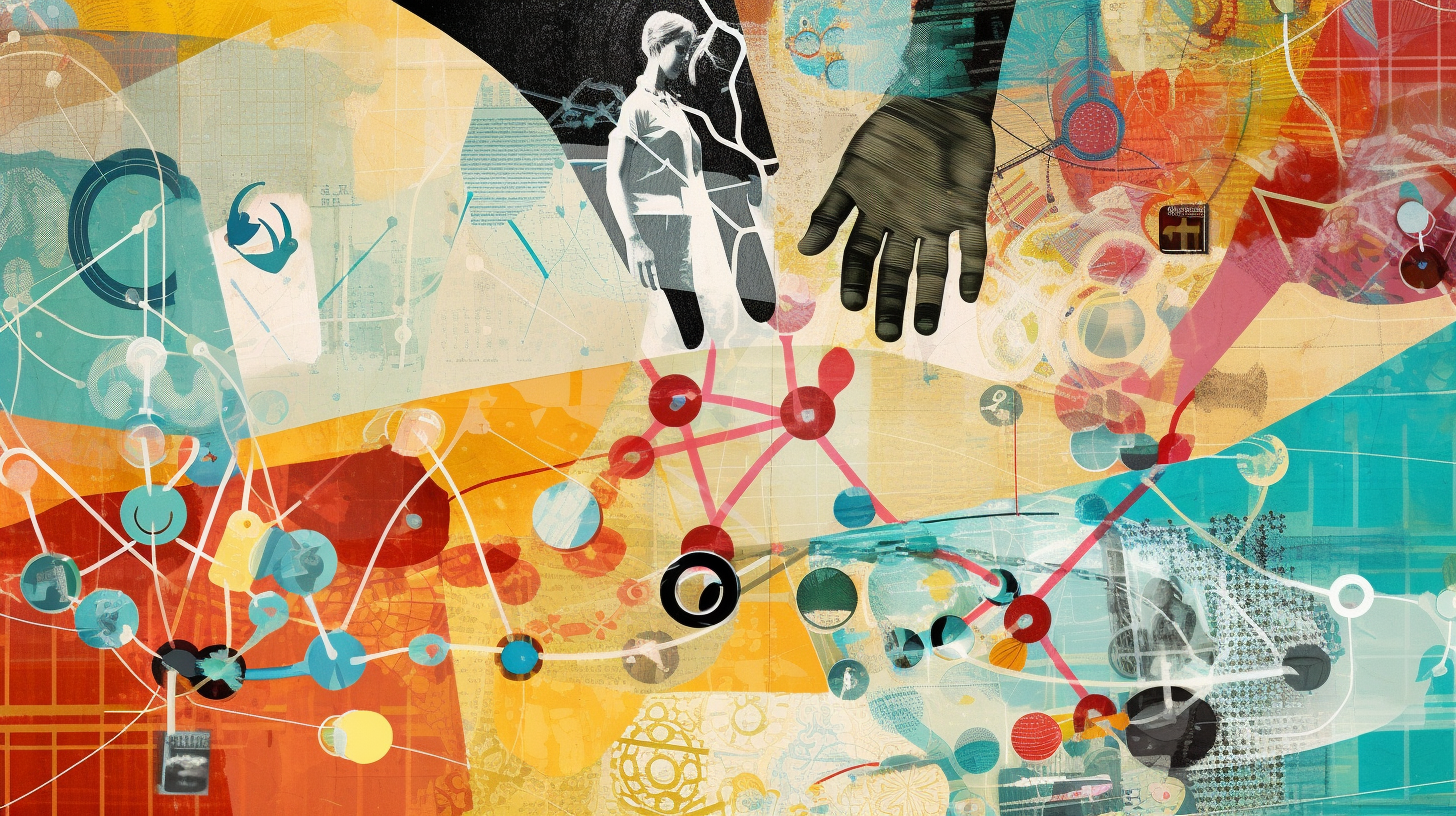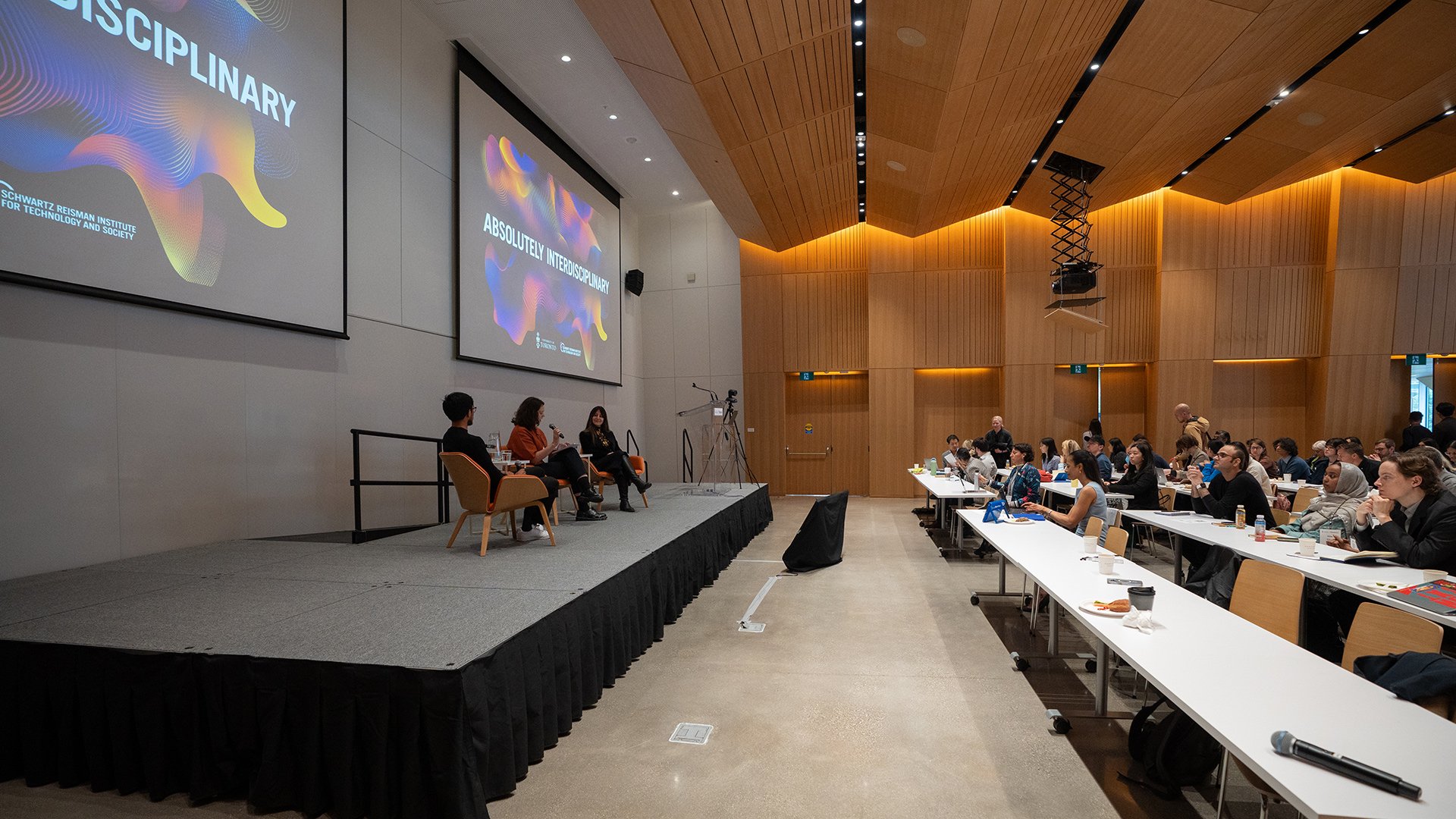Successful partnerships during health emergencies require effective governance strategies
In a recent article in PLOS Digital Health, SRI Graduate Affiliate Vinyas Harish explores how cross-sector partnerships can enable new technologies for more effective healthcare during emergencies, and the importance of robust governance frameworks.
How can health institutions develop innovative solutions during a crisis? Amidst the unprecedented expansion of digital tools to support emergency responses during the COVID-19 pandemic, SRI Graduate Affiliate Vinyas Harish sought to answer this question.
In a recent article in PLOS Digital Health, Harish explores what frameworks are necessary for successful partnerships between health institutions and private companies to enable the rollout of new technologies for more effectively responding to a public health emergency. The study’s results demonstrate that robust and effective governance will play an essential part in the future of resilient health systems.
An MD/PhD candidate at the University of Toronto’s Dalla Lana School of Public Health and Temerty Faculty of Medicine, Harish’s background in computer science led him to consider how the implementation of technical systems can have real-world impacts for healthcare delivery. “Throughout my training, I’ve focused on ideas of implementation, and how we make technologies work in the real world,” says Harish.
Drawing on case studies from the COVID-19 pandemic, SRI Graduate Affiliate Vinyas Harish’s research demonstrates the need for flexible governance when it comes to effective partnerships between healthcare providers and technology start-ups.
Through the support of fellowships at the Schwartz Reisman Institute for Technology and Society and the Centre for Ethics, Harish engaged a range of interdisciplinary approaches that led him to recognize the central role of governance principles in the application of new technologies. He applied these ideas to the real-world context of the pandemic response by interviewing key stakeholders at organizations engaged in cross-sector partnerships.
Harish’s co-authors include SRI Faculty Affiliate Laura Rosella of the Dalla Lana School of Public Health and Temerty School of Medicine, a Canada Research Chair in Population Health Analytics and project lead for the Artificial Intelligence for Public Health Training (AI4PH) Platform, and SRI Faculty Affiliate Anita McGahan of the Rotman School of Management and Munk School of Global Affairs & Public Policy.
As Rosella observes, a crucial insight of the study is how it links effective governance with the principles of flexibility and resilience that are required in an emergency. “Part of having a resilient health system is being able to adapt quickly and scale decisions,” notes Rosella. “While there are many important principles when it comes to partnerships, these considerations often change in the context of an emergency to what is practical. Ethics and proper protocol must be central and also balanced with allowing for adaptation to enable greater resilience and flexibility when a rapid response is required.”
By providing key takeaways for bridging the gap between theory and practice in healthcare technology, the study points towards necessary directions to develop tools that can ensure greater resilience of health systems in an emergency.
Barriers and enablers of effective cross-sector partnerships
Cross-sector partnerships are essential to leveraging new tools, as health systems collaborate with technology startups to develop digital tools that enable more effective approaches for care, coordination, and analysis. However, ensuring adequate governance frameworks for new technologies that are procured quickly while a crisis unfolds can pose significant challenges.
Harish and his co-authors sought to better understand the barriers and enablers of effective partnerships by analyzing three case studies involving Canadian health organizations and tech startups: a patient-facing virtual care platform, a secure messaging platform for physicians, and a data science platform to support a public health organization. These examples provide context for the deployment of new tools in clinical, operational, and epidemiological contexts.
Among the study’s findings were that time and resource pressures created by the COVID-19 pandemic had major impacts. To build effective partnerships, “early and sustained alignment on the core problem was critical for success,” the authors note. Standard procedures such as procurement were often triaged and streamlined due to emergency conditions. Amidst this context, social learning and the flexibility of startups were leveraged to play a valuable role. The accelerated demands of the pandemic also generated a new risk of “hypergrowth,” in which product offerings and internal processes could deviate away from their initial purpose, turning into something they were not meant to be.
As Rosella observes, “In developing digital tools for health systems and decision-making, the part that is always a challenge is their implementation and scale-up. In the same way that a lot of thinking is required for developing effective technologies, this is also true of making them work at scale in the real world.”
The study provides several insights for improving future cross-sector partnerships. First, knowledge translation initiatives are necessary to promote better understanding of governance principles among key stakeholders. Second, public institutions should consider opportunities for accelerating procurement practices that are too lengthy and complex for startups. Finally, developing and refining strategies for building public trust is essential, especially in the context of new solutions that are highly technical in nature.
How technology is reshaping healthcare
As Harish observes, the COVID-19 pandemic dramatically shifted the use of technology in healthcare, with a wide range of tools adopted by institutions, practitioners, and consumers.
One key area for innovation was the use of data to inform public health strategies. “Routine interactions often generate data,” says Harish. “In the context of an emergency, there is an opportunity to use this data to help with decision making.” New infrastructures to leverage mobile phone data and measure outbreaks through wastewater were developed that can be preserved for the future, he notes. However, strategies for how this data is owned and used are still emerging, and principles for responsible use are central to enabling public acceptance. “You can leverage data in a way that promotes social license and public good, but you have to consider how to do it responsibly,” says Harish. “Governance is a key way of making that happen.”
Laura Rosella is an associate professor at U of T’s Dalla Lana School of Public Health and Temerty Faculty of Medicine, education lead for the Temerty Centre for Artificial Intelligence Research and Education in Medicine (T-CAIREM), and a faculty affiliate at the Schwartz Reisman Institute.
As Harish and Rosella note, technologies like real-time data collection are now essential to the delivery of effective healthcare. “If we don’t have a way to embrace technology, we are going to miss important opportunities to improve the health of our population,” says Rosella. “We need to better understand partnerships and tools like the ones focused on in this study to ensure we can respond in robust ways as a society in the context of a pandemic. Digital technologies are no longer a ‘nice to have’—they are a requirement now for any public health emergency.”
“Inevitably, you’re going to see that in an emergency, for the sake of doing things quickly and the fear of not acting, there will be an impetus to act,” observes Harish. “What we found in speaking to people across hospitals, public health, and the technology sector is that, when faced with that time pressure, you still need to think about the best actions in a way that abides by professional standards and practical considerations.”
“Hospitals are faced with all this technology they have never seen before, and they are trying to figure out how to engage with the companies providing it,” noted Rosella. “As a result, this delays uptake. And so we need to figure this out—we can’t be asking how to do this in a responsible way in the middle of an emergency.”
Harish’s next projects include analyzing mobile phone data to understand urban greenspace use in Toronto during COVID-19, and exploring how robust machine learning models developed to predict severe patient outcomes are to changing pandemic conditions. Rosella, in her work as project lead for the AI4PH Training Platform, is training the next generation of practitioners that will successfully leverage such new tools and strategies.
As digital technologies become increasingly central to healthcare, Harish and Rosella’s research points to important new directions and frameworks to support the development of robust health systems that are able to respond to shocks, and support a healthy society.










